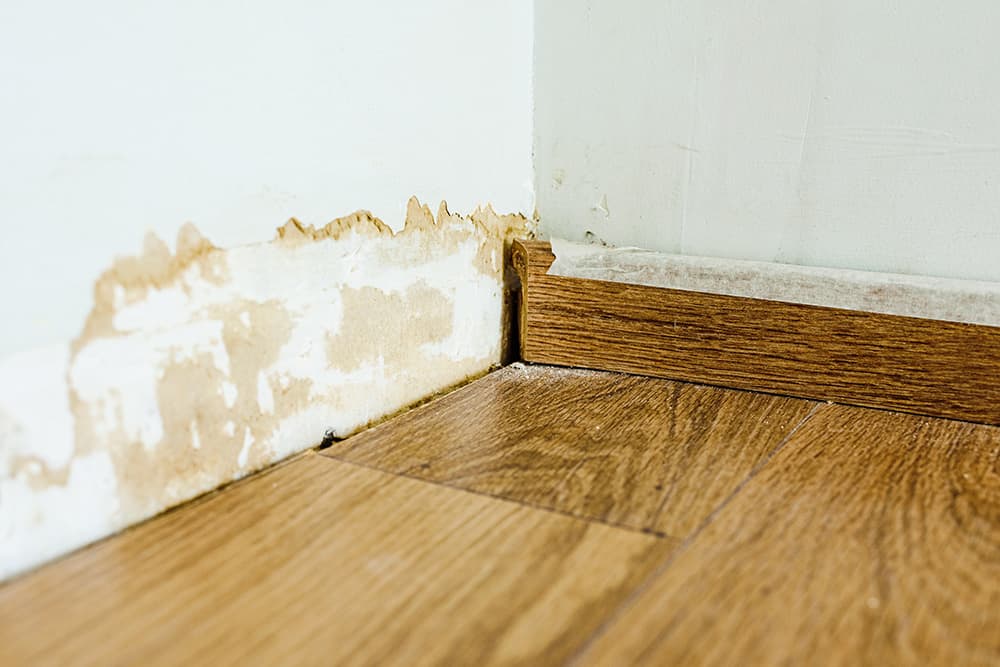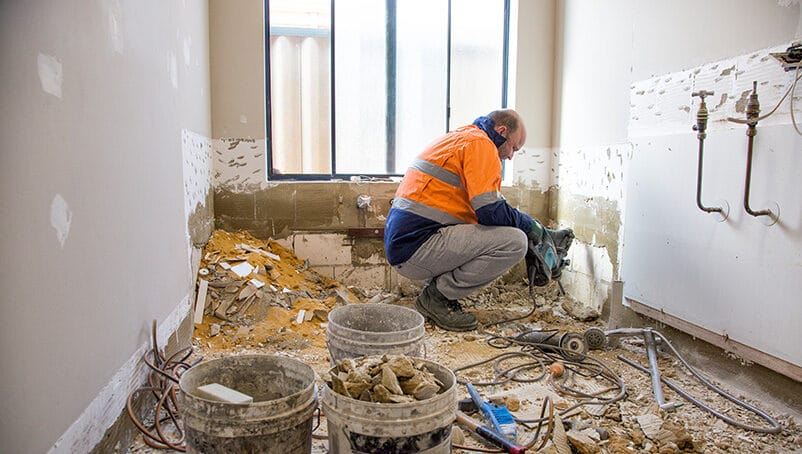Water Damage Cleanup Experts Offering Prompt and Efficient Solutions
The Refine of Water Damage Clean-up: Ensuring Your Home Is Recovered Properly
Water damages can be an overwhelming challenge for property owners, requiring a thorough and organized clean-up process to bring back security and capability. damage restoration services. Following this, reliable water removal strategies play a pivotal role in reducing further damage.
Evaluating the Damage
Upon finding water damage, the initial step is to thoroughly assess the extent of the impact. This initial evaluation is crucial, as it helps determine the essential actions for reliable clean-up and remediation. Begin by examining the affected locations, consisting of wall surfaces, ceilings, floors, and personal items, to recognize the source of the water intrusion, whether from flooding, leakages, or condensation.
Documenting the damage is essential for both insurance cases and preparing remediation efforts - damage restoration services. Usage photos and written notes to record the intensity of the damage, keeping in mind any afflicted structural elements and products. Pay special focus to areas that may not be immediately noticeable, such as behind walls and under carpetings, as concealed moisture can bring about additional problems, consisting of mold and mildew growth
In addition, evaluate the timeline of the water exposure. The longer the materials remain damp, the greater the potential for damage. Recognizing the period of direct exposure will certainly inform the necessity of remediation initiatives. Ultimately, a detailed assessment prepares for an effective water damage cleaning process, making sure that all affected locations are addressed successfully and thoroughly.
Water Extraction Methods

Professionals usually use completely submersible pumps for bigger quantities of water, which can promptly alleviate flooding in basements or other affected areas. For smaller amounts, wet/dry vacuum cleaners are usually used to remove residual moisture from carpets and hard surfaces. In addition, using mobile extractors enables targeted elimination in constrained rooms or locations with delicate materials.
In instances of contaminated water, such as sewer or floodwater, progressed removal methods may involve the usage of biohazard tools to make certain safety and security and conformity with health and wellness policies. High-powered extraction devices are vital in lessening water retention in architectural materials, which can cause mold growth and architectural damage otherwise dealt with quickly.
Ultimately, the performance of water extraction techniques plays a crucial function in the overall success of the water damages clean-up process, laying the foundation for subsequent restoration initiatives.
Drying and Dehumidification
When standing water has actually been successfully extracted, the following vital phase in the water damages cleanup procedure is drying and dehumidification. This action is necessary to avoid more damage and mold and mildew growth, which can take place within 24 to two days in wet atmospheres.
To attain efficient drying out, specific tools such as industrial-grade air movers and dehumidifiers is used. Air movers flow air across wet surface areas, improving evaporation rates, while dehumidifiers reduce humidity degrees in the air, promoting a favorable setting for drying out. The combination of these devices makes certain that dampness is drawn out from floors, wall surfaces, and furnishings, allowing them to completely dry thoroughly.
It is crucial to monitor the drying out procedure carefully. Professionals typically make use of moisture meters to evaluate the wetness content in numerous products, making certain that all impacted areas reach appropriate dryness levels. This careful approach helps to protect against surprise dampness pockets that can cause structural damage or harmful mold development.

Cleaning and Sterilizing
After the drying out and dehumidification phase is full, the following essential step in water damages cleanup is cleaning and sanitizing the affected locations. This process is important to avoid the development of mold, bacteria, and other pathogens that thrive in damp environments.
The cleaning stage commonly involves getting rid of any debris, dust, and impurities from surface areas utilizing specialized cleansing agents. For hard surface areas, a mix of soap and water or industrial cleansing items is typically employed. Soft products, such as furniture and carpets, might need more extensive cleansing methods, consisting of heavy steam cleaning or deep removal techniques, to ensure detailed cleanliness.

Sterilizing official website follows cleaning, making use of EPA-approved disinfectants to remove damaging microbes. This step is crucial, particularly in locations that might have entered into contact with floodwaters or sewer, as these sources can present serious health and wellness threats.
Additionally, it is very flood remediation company important to deal with any kind of remaining smells, which might require the use of smell neutralizers or advanced techniques like ozone therapy. Correct cleaning and sanitizing not only recover the safety and hygiene of your home however additionally prepared for successful remediation and fixings in succeeding stages of the water damage clean-up procedure.
Reconstruction and Repairs

Once the assessment is full, repair efforts can start. Furthermore, flooring might need comparable interest, depending on the level of water direct exposure.
It is crucial to involve seasoned reconstruction check here specialists throughout this procedure, as they possess the proficiency to handle complicated repairs properly. They can assist minimize prospective future concerns, such as mold growth or architectural instability, thus making sure a safe and habitable living setting. Ultimately, efficient reconstruction and repair work recover the home's integrity and improve its total value.
Final Thought
Finally, the process of water damage clean-up is critical for bring back a home to its pre-damage condition. Each stage, from assessing the damage to carrying out reliable water removal techniques, complied with by detailed drying out, sanitizing, and required repair services, plays an important function in making sure safety and security and conformity with structure criteria. Reliable implementation of these actions not only mitigates immediate damage but likewise improves the long-lasting stability and value of the residential or commercial property.
Water damage can be a complicated difficulty for property owners, requiring a precise and structured clean-up process to recover safety and security and performance. Eventually, a detailed analysis lays the groundwork for a successful water damage clean-up procedure, making certain that all impacted areas are addressed properly and completely.
Effective water removal methods are important in minimizing damage and stopping further difficulties complying with a water intrusion occasion.In conclusion, the procedure of water damage clean-up is crucial for recovering a home to its pre-damage condition. Each stage, from evaluating the damages to executing reliable water extraction methods, followed by complete drying, sterilizing, and necessary repair work, plays an essential function in ensuring security and conformity with building requirements.